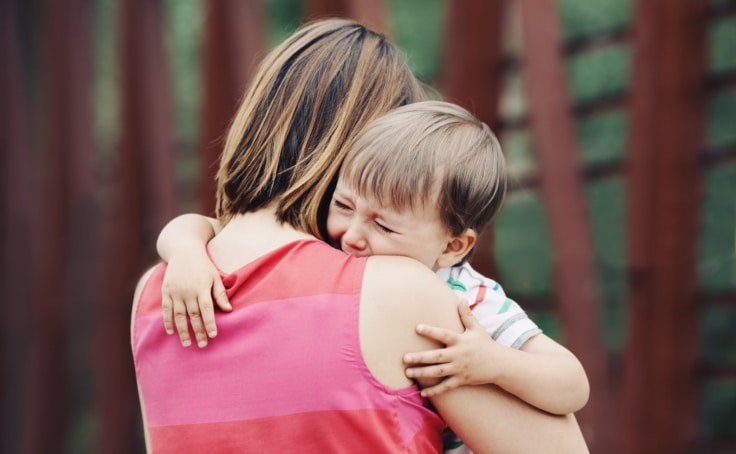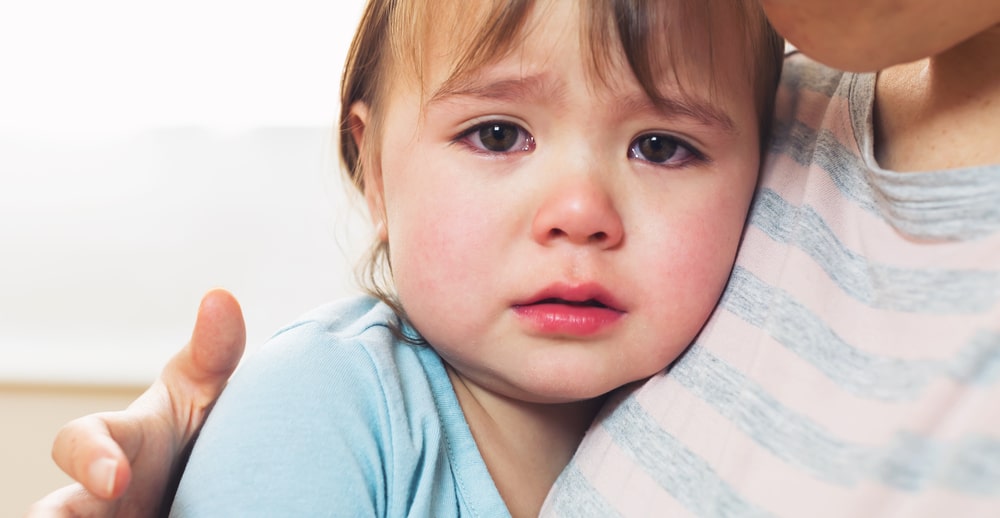Supporting Babies and Toddlers After Death of a Parent: What Educators Need to Know

Key Takeaways
Grief in babies and toddlers isn’t always obvious. It is often expressed through behavior.
Young children need secure relationships to feel safe. When they’ve lost a parent, this need intensifies.
- Educators can help provide safe, secure environments and build relationships with caregivers to further support during this time.
Babies and toddlers who experience the death of a parent may not understand the concept of death, but they still experience the loss deeply.
Children younger than age 3 typically don’t fear death because they don’t yet grasp its permanence or finality. But they are deeply affected by separation and loss. Even the youngest children can express distress through changes in sleep, feeding, and behavior. These reactions may become worse when adults avoid talking about what happened or don’t provide consistent support.
Research shows that talking about death doesn’t create sadness, it supports healing. As early childhood educators, you don’t need to have the perfect words. You just need to show up with honesty, compassion and stability.
Here’s how early childhood educators can create connection and consistency for grieving little ones.
Understand Infant and Toddler Grief
Grief in babies and toddlers isn’t always obvious. You might not see tears or hear words like “I miss mommy,” but you may notice:
- Sleep disturbances or feeding changes
- More frequent crying, tantrums, harder to soothe, or unusually quiet
- Regression in skills like walking, talking or toilet training
- Startle responses or irritability
- Clinginess or separation anxiety, or withdrawal or avoidance
- Repetitive play themes around separation, loss, or “gone”
These behaviors are not “bad,” they’re the child’s way of trying to cope and feel secure again.
For children in neighborhoods or communities where death is more frequent, understanding of death may develop earlier. In military families, where loss can come suddenly due to deployment or combat, the emotional impact may be compounded by trauma and frequent separation.
Grief in infants is expressed through behavior. Consistency and compassion from caregivers are key.
Noelle Hause

Be a Calm and Caring Anchor
Young children need secure relationships to feel safe. When they’ve lost a parent, this need intensifies.
As an educator, your steady, loving presence matters more than you may realize. You can provide safety by:
- Using consistent, predictable routines
- Staying calm and emotionally available through responsive caregiving
- Allowing space for big feelings without rushing to “fix” them
- Offering physical reassurance and proximity, when the child seeks it
Your presence is your most powerful tool. There are no perfect words; your consistent, kind, and calm presence is what matters.
Sarah LeMoine
Use Simple, Honest Language
Even if the child is preverbal, they understand tone and emotion. For toddlers who do speak, avoid euphemisms like “went to sleep” or “lost.”
Instead, use simple truths:
- “Daddy died. He can’t come back, but you’re safe here with me.”
- “You’re feeling sad. I’m right here.”
- “Mommy died. That means her body stopped working and she can’t come back.”
Always match your words with gentle, caring actions. Children this young may not understand death fully, but they are sensitive to emotional cues. Repetition is okay. It helps them process.
Partner with the Family and Mental Health Supports
Stay in close contact with the child’s remaining parent or caregiver. Ask how the child is doing at home and what strategies are helping.
Every family’s beliefs about death are shaped by culture, religion, and lived experience. Some may believe in an afterlife; others may focus on death’s finality. Children in under-resourced communities may encounter death earlier and more often.
What to do:
- Ask caregivers how they’ve talked to their child about the loss
- Avoid assumptions and get to know the family’s beliefs and wishes
- Engage in two-way conversations about how death will be discussed in the early learning program
- Share helpful, developmentally grounded resources without imposing a single approach
Being culturally humble and responsive means we lead with curiosity, not assumptions.
Sarah LeMoine
Grief may coexist with other challenges, especially if the child experienced trauma around the parent’s death.
You can also encourage families to seek IECMH (infant and early childhood mental health) services when:
- A child’s distress is persistent or escalating
- Behaviors are extreme or disruptive
- Play indicates unresolved trauma
- A caregiver expresses concern or emotional burnout
Learn more about trauma-informed care in early childhood education programs.
Build a Grief-Sensitive Environment
Children learn from what they see. Here are ways to help all children in your care develop empathy and resilience:
- Reading books that explore feelings and loss
- Creating a cozy corner for quiet time
- Encouraging children to express their emotions through art, music, play or storytelling
- Responding to “big feelings” with curiosity and compassion
These small shifts make a big difference.

Healing Happens through Relationships
When a child loses a parent, their world shifts. But with steady, attuned adults, they can still feel safe enough to explore, connect and heal.
Whether you’re an educator, program leader, or both, your relationship is an intervention. You are not expected to replace a lost parent. But you can show up each day as a safe, predictable adult who listens and believes in a child’s resilience. By providing steady routines, honest communication, and responsive care, you help even the youngest child begin to process loss in the safest way possible: through your relationship.

